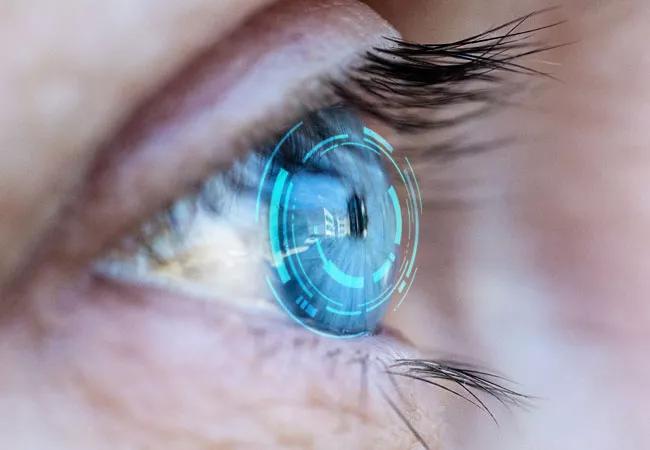The lenses continuously measure IOP and can transmit data to clinicians

A team of Cleveland Clinic researchers is developing an “intelligent” contact lens to continuously measure intraocular pressure (IOP) throughout the day. The work, led by Aaron Fleischman, PhD, of the Department of Biomedical Engineering in Lerner Research Institute, could help clinicians better manage patients who have glaucoma, the second leading cause of blindness in the United States.
Advertisement
Cleveland Clinic is a non-profit academic medical center. Advertising on our site helps support our mission. We do not endorse non-Cleveland Clinic products or services. Policy
Building on a capacitive pressure sensor previously designed by Dr. Fleischman and his team, the researchers now seek to imbed a similar sensor (called the Tonochip IOP sensor) in an integrated contact lens, dubbed the iLens, to improve glaucoma management.
Reducing IOP is the most effective way to manage glaucoma, and it begins with accurate assessment of pressure levels.
Currently, IOP is measured via applanation tonometry (AT), in which pressure is applied to the cornea. AT has several limitations, however:
The iLens, Dr. Fleischman explains, would offer solutions to many of these limitations. “The iLens will be an extended-wear contact lens that is comfortable — easily conforming to the shape of the eye — aesthetically pleasing and easy to monitor,” he says.
While the patient wears the contact lens, an external antenna reader that is connected to the sensor in the lens will continuously measure pressure, enabling detection of potential changes in IOP at all times the lens is being worn.
Dr. Fleischman’s vision for the iLens and its potential uses and benefits does not end there. “Our ultimate hope is that the iLens be used not just to detect disease-signaling IOP changes, but also to enable smart delivery of glaucoma medications,” he observes.
Advertisement
While glaucoma can be treated with eye drops, they can be difficult to administer, which often results in only a small percentage of the solution being absorbed into the eye. Dr. Fleischman says the Tonochip would be a necessary element to create a smart contact that could dispense medication directly in response to real-time IOP.
“Using an iLens to measure IOP regularly can detect fluctuations and enable treatment, either by delivering a personalized eye drop regimen through the lens or by enabling clinicians to treat fluctuations as they arise,” notes Dr. Fleischman. “It would also allow patients to observe their own IOP more regularly, which could encourage better compliance with eye drop regimens.”
Advertisement
Advertisement

Registry data highlight visual gains in patients with legal blindness

Prescribing eye drops is complicated by unknown risk of fetotoxicity and lack of clinical evidence

A look at emerging technology shaping retina surgery

A primer on MIGS methods and devices

7 keys to success for comprehensive ophthalmologists

Study is first to show reduction in autoimmune disease with the common diabetes and obesity drugs

Treatment options range from tetracycline injections to fat repositioning and cheek lift

The advanced stage of diabetic retinopathy is among the most challenging for retinal surgeons